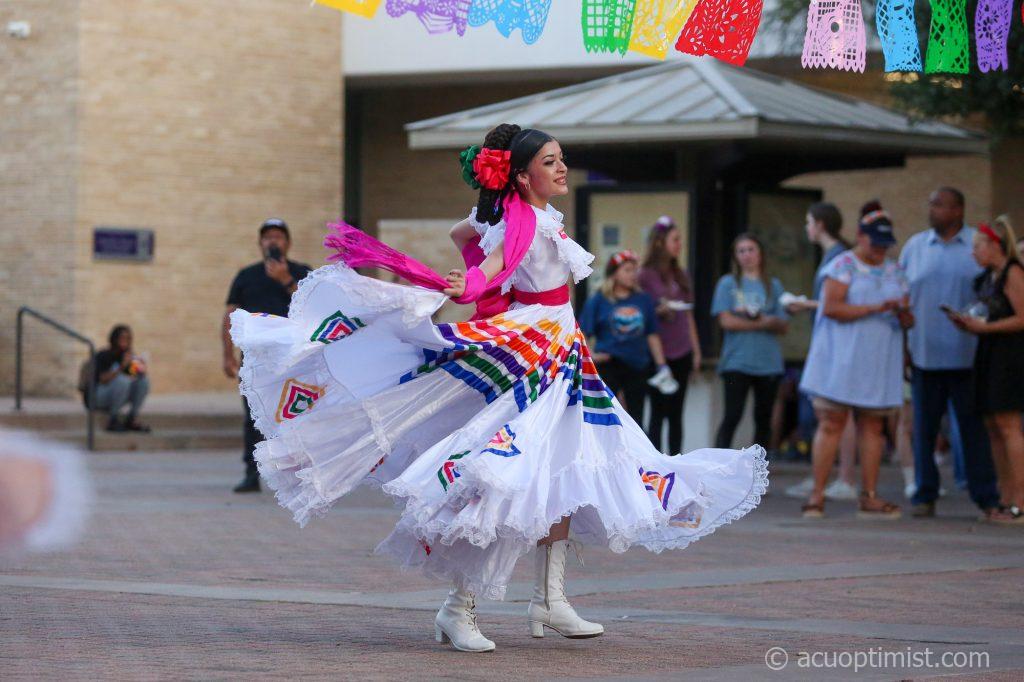Being new to campus can be hard, especially for a student who is not in the majority.
“When they come here, they do not find a culture that is fit for them. They don’t see people that look like them, either in administration or as professor and a lot of times we lose them. That is one reason why we lose them. Another reason is finances,” said Abel Alvarez, director of HSI initiatives.
ACU is an emerging Hispanic Serving Institution and is just a few percentage points away from that designation. That means that this institution is taking steps towards recognizing and helping these students have the resources to thrive in getting an education and in the ACU community.
“We saw the need to not only be an HSI according to the federal definition of HSI, but we wanted to serve Hispanic students well,” said Dr. Susan Lewis, provost.
ACU has made efforts to close the gap in becoming an HSI. A Hispanic Serving Institution is an initiative of Title 5, and it requires an institution to have at least 25% Hispanic students enrolled at the institution or campus. There are currently 516 HSI’s and more are emerging.
After an institution is deemed an HSI, the government offers three grants, according to the U.S. Department of Education. These grants are:
- The Developing Hispanic Servicing Institutions Program: helps expand and enhance educational opportunities, offerings, program quality, and stability of the institution to educate this community.
- HSI STEM and Articulation Program: increase the number of Hispanic and low-income students attaining degrees in these fields and develop agreements between two-year and four-year institutions in the STEM fields.
- Promoting Postbaccalaureate Opportunities for Hispanic Americans Program: helps expand the opportunities and offering in postsecondary degrees for Hispanic and low-income students.
To achieve the goal of being deemed an HSI, the university has created groups and plans. This started with the Action Committee for Hispanic Initiatives. This group was made up of faculty and staff, most being Hispanic. This group met monthly and led to the creation of the HSI task force.
Alvarez and Lewis co-lead an HSI task force. This task force met throughout the spring semester a couple of times a month. Multiple leaders on campus were a part of this team including some from admissions and ResLife. These meetings consisted of learning what an HSI is, an analysis of other universities and how they serve their Hispanic population, the history of ACU, and how the school community can improve the student experience.
This large task force ended after the spring semester, but some leaders of the group have continued to work on a strategic plan. This is an addition to the university’s strategic plan as one of its focuses is the diversity of our campus. It also has a plan on how to recruit faculty and staff who are Hispanic and serve them well.
The university has joined a program called Excelencia. This program specifically focuses on helping universities and institutions to serve their students well. The goal of this partnership is to be awarded the Seal of Excelencia.
Dr. Phil Schubert, president of the university, joined the president’s group of this program last year. Dr. Schubert has also become president of Presidents of the Latino Student Initiatives.
The university is now working through the first phase of applying to get the seal of Excelencia. This requires the university to provide percentages of students and initiatives that the university is preparing for campus. Along with this, the university has partnered with a group called IDEA. Both partnerships have met in the last few weeks to get a better understanding of the university and what the next steps are in accepting this community.
“The university the last three decades has really looked towards living out what we believe God is calling the institution to do,” said Anthony Williams, chief diversity officer. “We are doing what we are doing because we believe in loving our neighbor.”
The Office of Multicultural Affairs ensures that students are treated fairly on campus and have opportunities. There has been a push for a strategic plan and task forces happening in the past year and a half.
“How do we address the cultural connection? How do we ensure that they are going to see people in their classrooms and in our administration that look like them and see where they are coming from?” said Alvarez. “Those are all things that this office is concerned with.”
According to Williams, retention among Hispanic students has increased six percent. Over 72% is the highest retention that the campus has had since 2017. This retention shows a step in the right direction, but there is more to be done.
On top of the groups, partnerships and strategic places, Alvarez and Williams, in the past 18 months, have raised over 600,000 dollars in scholarships or cultural opportunities.
These efforts will allow the university to be one step closer to becoming an HSI, but the university is not looking at just the number. It is taking preemptive steps for this community that will not stop after becoming an HSI.


